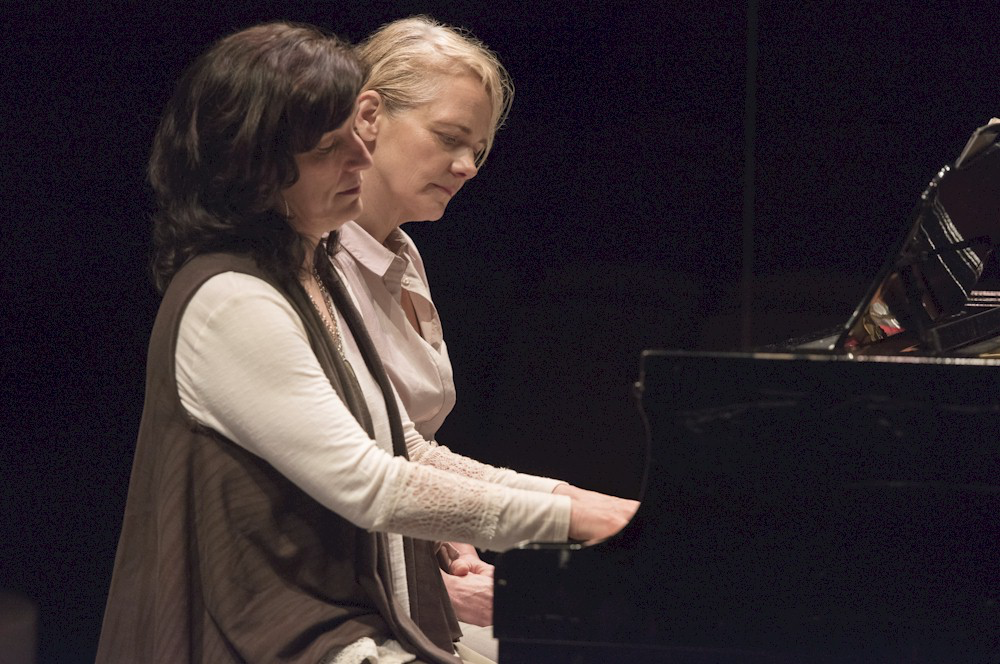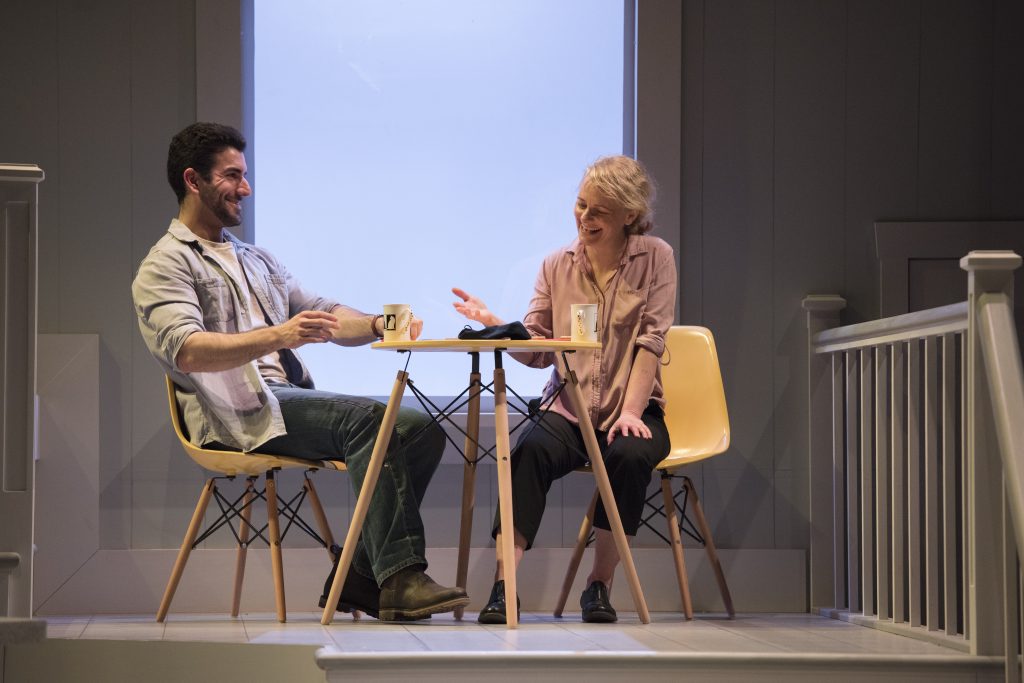
Credit: David Cooper
At the Arts Club’s Goldcorp Stage at the BMO Theatre Centre until May 14, 2017
604-687-1644/artsclub.com
THIS REVIEW WILL ALSO APPEAR IN THE MAY 4, 2017 PRINT EDITION OF THE WESTENDER
Posted April 27, 2017
“So. I’m a piano teacher”, says Elaine (Caitriona Murphy) at the beginning of The Piano Teacher. “And you,” indicating us, “are here for a lesson.” Murphy smiles her winning smile and invites us into Elaine’s studio – a tasteful white-on-grey music room with a gleaming piano centre stage. Set designer David Roberts situates stairs stage left, leading up to an interior landing that will feature later in the story of Elaine, concert pianist Erin (Megan Leitch) and Tom (Kamyar Pazandeh).
In the play, playwright Dorothy Dittrich gives us a most elegant, thoughtful commentary on music: “Music is about relationships”, Elaine tells us. It’s the space between one note and next. It’s about stories, about “home”, “leaving home” and “coming back”. In the classical tradition, it’s those grand concluding chords or those sweet but subtle resolving notes that bring us such joy. Then the 20th century arrived and with it musical dissonance that reflects society’s anxiety, fear and confusion.
The Piano Teacher, however, follows the pre-20th century pattern: Erin, a celebrated pianist, has been unable to play the piano since the tragic death of her husband and son two years ago. She can’t touch the piano, can’t even sit on the piano bench. “Every day I wake up I feel broken”, she says. She feels “choppy, scrape-y and jagged”. Through the course of the play, Elaine – who turns out to be an extraordinary therapist – and Tom bring Erin ‘home.’

Set design: David Roberts
Credit: David Cooper
Elaine, on the other hand, begins to question her own withdrawal from performing to teaching. “Oscar Peterson did not let arthritis stop him,” she says; Dittrich leaves Elaine’s story more open-ended.
Pazandeh is handsome and sensitive as Tom and he does some amazing renovations to that aforementioned landing as the story unfolds. Plenty of dramatic license here as the reno is finished by nightfall the day after Tom sizes up the job.
But it is the performances of the two women that make this play so powerful. Murphy simply exudes warmth, kindness and intelligence. Her character overflows with love of music: “Music is the essence of who we are”, she says. Elaine’s discomfort over the growing relationship between Erin and Tom seems forced but it does give us a window into Elaine’s own unresolved discontent.
Leitch, as Erin, is huddled and clenched; she clutches her baggy cardigan to her chest. If The Piano Teacher were a piece of music, Murphy would be in the major key, Leitch the minor. Erin’s hesitancy even to sit backwards on the bench indicates the depth of despair into which she has fallen. And when Leitch finally, gingerly touches the piano – not even the keys – it feels like an amazing breakthrough. It’s as if the sun has burst through dark clouds.
Plays – as opposed to musicals – with characters who play musical instruments make me nervous; can they really pull it off? Leitch and Murphy adroitly manage some duets but sound designer Patrick Pennefather washes in a soundtrack including Schubert, Bartok, Haydn and Oscar Peterson when it’s appropriate. A reference to a buddy of Tom’s prompts the old 20s pop song, “My Buddy.”

Credit: David Cooper
On that note, a feminist quibble: tilting toward fairytale and Hollywood is the Erin/Tom romance. Erin’s healing would not have been diminished by Tom simply becoming her buddy, not her lover. Where their relationship goes would be better left to our imagination because it feeds into the myth that a woman is not complete without a partner – the handsome Prince, the Knight in Shining Armour.
That aside, The Piano Teacher, commissioned by the Arts Club as part of its Silver Commissions Project and directed by Yvette Nolan, is a beautiful, intelligent exploration of the power of music and friendship. I was moved by it and loved almost every minute.

